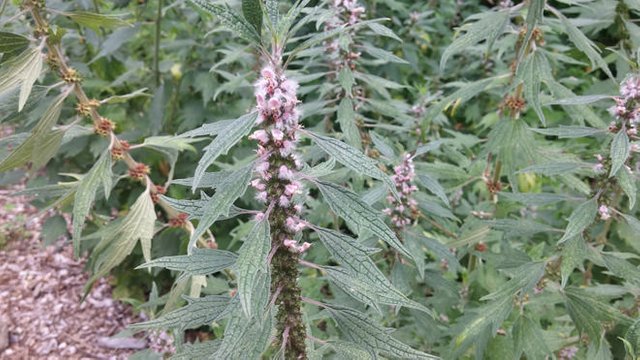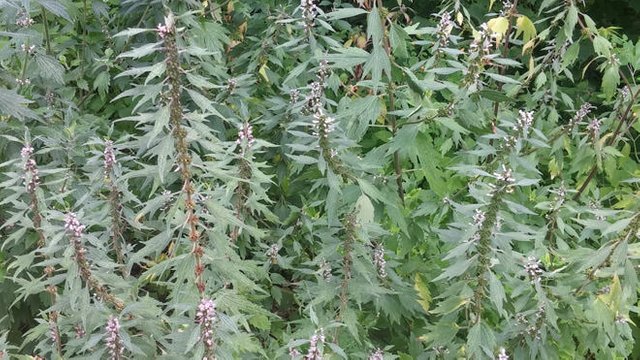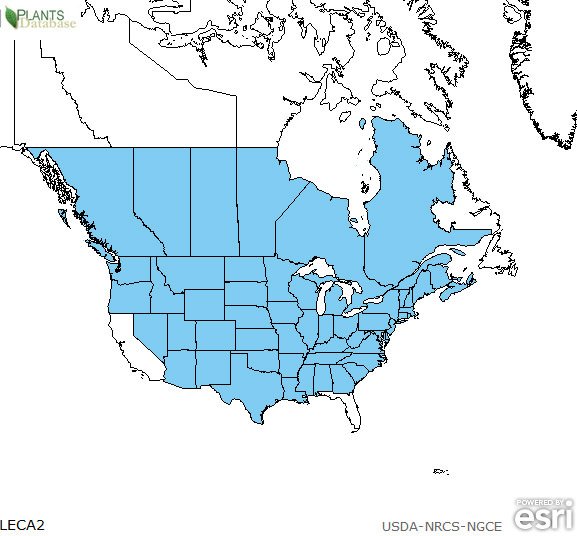Getting to Know Herbs: Motherwort
Motherwart brings out the lion in you to get through the hard times and do the work that needs to be done, be it pushing a baby through the pelvis, facing fears or calming down. The leaves are used in herbal medicine as an extract or infusion, harvested during the flowering period.
The stems are squarish with short hairs and is often a purple hue. Pink to purple flowers grow on the stem in the upper part of the plant, and bloom from July to August. It grows to about 24 to 40 inches (60 to 100 cm).

Photo by @krnel
Motherwort is also known as Agripalma, Agripaume, Agripaume Cardiaque, Cardiaire, Cardiaque, Cheneuse, Chinese Motherwort, Creneuse, Herba Leonuri, Herbe aux Tonneliers, Hjärtstilla, Leonuri Cardiacae Herba, Leonurus, Leonurus artemisia, Leonurus cardiaca, Leonurus cardica, Leonurus japonicus, Leonurus heterophyllus, Leonurus sibiricus, Lion's Ear, Lion's Tail, Mother's Wort, Oreille de Lion, Patte de Sorcier, Pustyrnik Obyknovennyj, Queue de Lion, Qinghao, Qiancengta, Sanjiaohuma, Stachys artemisia, Throw-Wort, Tianzhima, Tougucao, Yema, Yi Mu Cao, Yimuhao.

Photo by @krnel
Key Points
- grows all over North America, Europe and Asia
- lion and mother symbolism to get you through tough situations
- pink to purple flowers
- treats anxiety and heart conditions
History
This herb has been cultivated for thousands of years since ancient times. The name motherwort comes from the history of use that is symbolic to a mother that consoles such as for easing tension and anxiety of a child.
The scientific name Leonurus comes from the Greek lion's tail (leon - lion and ouros - tail). And Cardiaca is a reference to the heart organ which is related in how the herb is used as a medicine.
Where is it found?
Originating in Europe and Aisa, it's been introduced into North America by European colonialists and has propagated to nearly all 4 corners of the land, being found from Western to Eastern Canada except for Newfoundland it seems, and from Wester to Eastern United States except for California and Florida. The northern parts of Canada and Alaska also seem to lack it, according to being unreported there.
Motherwort likes partial sun and well drained soil. It can naturally be found beside the road, in fields, waste grounds, dumps and other disturbed areas. It's considered invasive and attracts bubble bees who use it for foraging.
What's it used for?
Uses are mainly for heart related issues, like heart failure, irregular heartbeat, high blood pressure and heart symptoms due to anxiety which means it can calm you down and alleviate fear. In women it's used for menstrual periods to relieve pain and menopause symptoms. It has been shown to reduce blood loss after a C-section by being injected into the uterus.
It can also help with intestinal gas (flatulence), cancer, sleep problems, asthma, and over-active thyroid (hyperthyroidism) and alcoholism. Some people use it on their skin for wounds, itches and shingles.
Are there any risks?
Motherwort is considered safe when taken orally. Some side effects might be diarrhea, stomach irritation and uterine bleeding. Skin contact can cause rashes and sensitivity to the sun. Pregnant women and women breast feeding should avoid it, as it can stimulate the uterus that might cause a miscarriage. But it's not known if there are issues when breastfeeding.
Motherwort might cause sleepiness and drowsiness, so sedative medications might cause too much sleepiness if taken with motherwort. Some of these pharmaceuticals are clonazepam (Klonopin), lorazepam (Ativan), phenobarbital (Donnatal), and zolpidem (Ambien).
References:
Previous posts on Getting to Know Herbs:
Common Plantain | Eleuthero (Siberian ginseng) | Black Cohosh | Common Bearberry | Mahonia Mountain Grape (Oregon Grape) | Blue Cohosh | Goldenseal
Thank you for your time and attention. Peace.
If you appreciate and value the content, please consider: Upvoting, Sharing or Reblogging below.
 me for more content to come!
me for more content to come!
My goal is to share knowledge, truth and moral understanding in order to help change the world for the better. If you appreciate and value what I do, please consider supporting me as a Steem Witness by voting for me at the bottom of the Witness page.


I have this growing wild on our property and made a tincture out of it. I'll usually add to my tea or drink as I don't care for the taste (or even a hint of alcohol).. and it definitely works for hot flashes- MUCH better than any supplement (black cohosh) that I have found in a store.
Cool, good effects and better than other herbs ;) But not so tasty heh.
Oh no...not at all- Take it quick and be done with it
It can also get you slightly buzzed if you smoke it but the smoke is so harsh that I would not suggest that anyone try it. I baught some for that reason once and I ended up caughing for a full 10 minutes before I threw the rest of the bag in a dumpster lol.
I didn't realize that it had these other uses though.
LOL, that's a funny story :P Better to use for non-smoking purposes ;)
that does not look like one I have seen before but now its something else to keep an eye out for, those leaves look pretty unique.
Yup, it's pretty common. I've seen it around the city in areas too.
Great article @krnel. I am gardening and learning about this very topic, specifically studying wild herbs and plants. Keep it coming!
Sweet, keep it up, this knowing is not common among people. Plants are the medicine and diet for optimal health.
Very very interesting and useful information. These plants are in abundant near the road of my building area. I was not aware of the name of this plant. As you wrote, this plant must be very useful. Can you tell how can one take it? I mean what part of this plant is used and how?
You can make extracts in boiling water or with alcohol, and simply eat the leaves (less concentrated, probably not good tasting). The first paragraph mentions that the leaves are what is used.
Interesting the multiple uses of this plant in the medical field although in my country Venezuela for the economic situation and the difference in terms of the political parties we have all made some shamans doing naturopathic medicines has my vote to witness and thank you for sharing this post
Great read. I will be looking for this beauty in the wild.
This plant is Linn seed..... local name in India is Till ...its oil use in many ways.. mostly in cosmetics.
Great guide! I never knew about this one.
Thanks to @porters, this post was resteemed and highlighted in today's edition of The Daily Sneak.
Thank you for your efforts to create quality content!